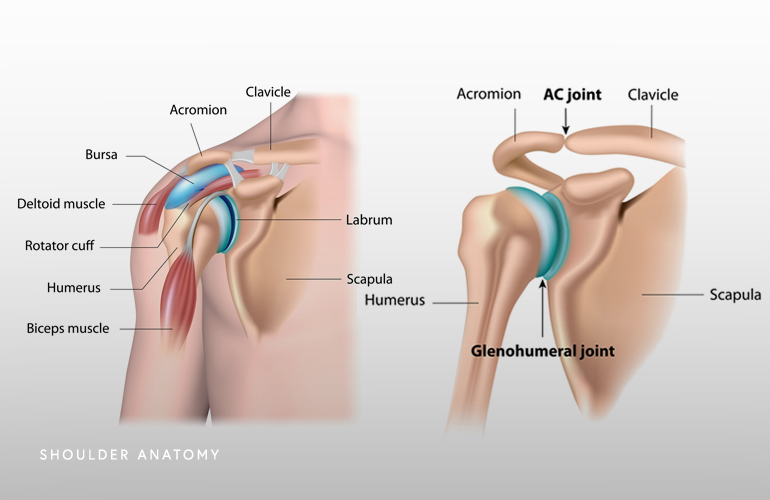Shoulder Anatomy
The shoulder joint, most flexible joint in the entire human body, is formed by the union of three major bones including the humerus, scapula and clavicle. Shoulder anatomy is also made up of separate joints including the acromioclavicular, sternoclavicular and glenohumeral joints. These joints work together to provide a wide range of motion allowing us to enjoy everyday activities and participate in sports. Dr. Nikhil Verma in Chicago, Illinois specializes in anatomy of the shoulder and numerous shoulder injuries and conditions.
Anatomy of the Shoulder

Three major bones connect and create a 90 degree angle at the shoulder. These bones include:
- Humerus- The largest bone of the arm connects to the scapula and clavicle. The head of the bone has a ball-like design and creates the ball-and-socket joint with the scapula (glenoid).
- Scapula- Commonly known as the shoulder blade, is a flat triangular bone that connects to the collarbone at the front of the body.
- Clavicle- Otherwise known as the collarbone, extends across the front of the shoulder and stabilizes movement of the shoulder. The collarbone is the major connection between the axial skeleton and the upper extremity.
The three major bones and the sternum, chest bone, form three joints. These joints include:
- Acromioclavicular (AC) joint- Joint between the collarbone and the scapula. The AC joint forms the highest part of the shoulder and provides a lifting ability.
- Sternoclavicular joint- The joint is located at the center of the chest and allows movement of the clavicles.
- Glenohumeral joint- The main ball-and-socket joint of the shoulder, created by the scapula and humerus, allows the arm to rotate and move in and out, up and down.
Structures Associated with Shoulder Anatomy
Shoulder anatomy also includes cartilage, ligaments, tendons and muscles that cushion, connect and attach the shoulder joint. The joint also have several other important structures that compose the total anatomy of the shoulder. These structures include:
- Rotator cuff – A collection of muscles and tendons that surround the shoulder allowing support and wide range of motion.
- Bursa – A small sac of fluid that protects and cushions the tendons of the rotator cuff.
- Labrum – A cuff of cartilage that forms a cup-like environment for the humerus. The labrum provides stability to the ball and socket joint preventing dislocation of the shoulder.
The anatomy of the shoulder is complex, but the shoulder joint allows a wide range of movement. The joint is used very often so shoulder injuries are common in patients. For more information on shoulder anatomy, please contact the office of Dr. Nikhil Verma in Chicago, Illinois.


